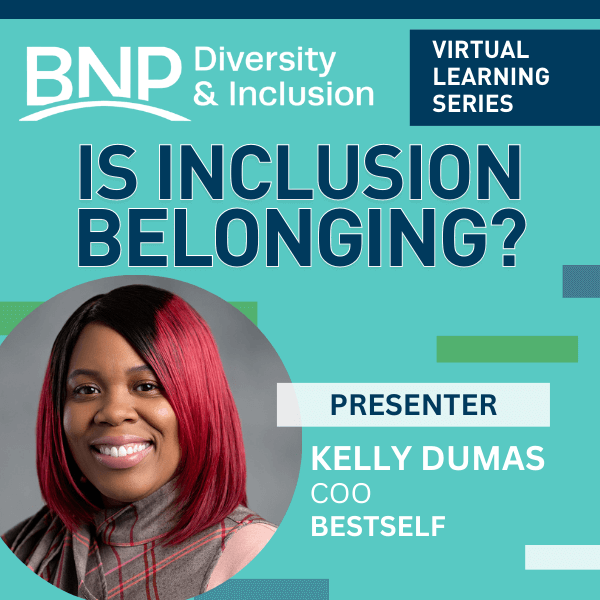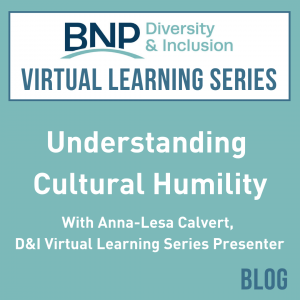Inclusion Is Not Synonymous With Belonging
Blog Categories
March 22, 2023
If you have ever wondered, Isn’t inclusion the same as belonging?, you are not alone. So often we hear these words and think of them as interchangeable terms to describe the same thing. You might be surprised to learn that have different meanings.
Kelly Dumas, COO at BestSelf Behavioral Health, will join us during Buffalo Niagara Partnership’s D&I Virtual Learning Series starting April 18, to help us to answer the question, “Is Inclusion Belonging?”
Here are some brief definitions to help clarify the meanings of inclusion and belonging:
- Inclusion ensures the thoughts, ideas, and perspectives of all people matter, as demonstrated through the actions and behaviors displayed in the workplace.
- Belonging is about an individual’s feelings of acceptance and a sense of being valued for who they are as distinct individuals and the contributions that they make toward enhancing the workplace, as a result of their integrated perspectives.
For instance, an employee may have been included in a team project. However, if every idea the employee shares is unilaterally dismissed without discussion or consideration, then inclusion has not taken place in this scenario. As a result of this type of treatment from their co-workers, it is likely that the employee also will not have a feeling of belonging to the team.
It is vitally important that inclusive practices are engaged in at every level of the organization. Senior leadership, middle managers, and front-line staff must all work to create a culture of inclusion by really valuing the ideas, contributions, and perspectives of everyone - especially those that are different from themselves. When companies can create this type of atmosphere, then the probability of employees experiencing a sense of belonging will increase. DEI executive Daisy Auger-Domínguez, author of Inclusion Revolution asserts that "you can create a sense of psychological safety where everyone feels confident and comfortable to take risks, make mistakes, contribute opinions, and be candid about what they are up against."
In the upcoming Virtual Learning Series with Kelly Dumas, you can expect to learn more about:
- Differences between inclusion and belonging
- Innovative ways to create a culture of belonging
- Tools to gauge your level of inclusion and belonging as a leader
- Resources to plan and level up your belonging culture and help you define what belonging looks like for those you lead
According to research on workplace belonging released by BetterUp:
If workers feel like they belong, companies reap substantial bottom-line benefits. High belonging was linked to a whopping 56% increase in job performance, a 50% drop in turnover risk, and a 75% reduction in sick days.
As the old saying goes, we truly are better together.

Related Posts
Understanding Cultural Humility
Anna-Lesa Calvert to present during D&I Virtual Learning Series
Cultural humility. The term may be unfamiliar, but it is a critical component to any organization’s diversity, equity, and inclusion efforts.
Expert Forum: Will a sports injury, genetics, or overactivity affect me or my child as we age?
You might not think about it when you’re a teen or young adult, but the orthopaedic injuries we experience in our youth can have implications later in life. Your genetic makeup may also play a factor in joint deterioration or mobility as you get older, but it’s not all doom and gloom: You or your child CAN make a full recovery and also take steps to stay healthy as you age! Here are some common scenarios that Excelsior Orthopaedics treats people for every day.
Expert Forum: Cyber Security Risks Facing FII and Mitigation Strategies
According to IBM’s Cost of a Data Breach 2021 report, the average cost of a major cybersecurity incident to a business or organization is more than $4 million.
That’s a staggering number, but it puts the importance of information security for businesses and organizations under the spotlight—and attached to blaring sirens and alarms—that this problem deserves.
Leader Exchange – Preparing you for advancement opportunities
Are you a new or developing leader who is highly motivated and seeks to grow as a leader and earn a promotion within your company? Then the BNP’s Leadership Exchange program could be your key to personalized leadership development.




